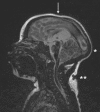Emerging Role of Zika Virus in Adverse Fetal and Neonatal Outcomes
- PMID: 27281741
- PMCID: PMC4978612
- DOI: 10.1128/CMR.00014-16
Emerging Role of Zika Virus in Adverse Fetal and Neonatal Outcomes
Abstract
The rapid spread of the Zika virus (ZIKV) in the Americas and its potential association with thousands of suspected cases of microcephaly in Brazil and higher rates of Guillain-Barré syndrome meet the conditions for a Public Health Emergency of International Concern, as stated by the World Health Organization in February 2016. Two months later, the Centers for Disease Control and Prevention (CDC) announced that the current available evidence supports the existence of a causal relationship between prenatal Zika virus infection and microcephaly and other serious brain anomalies. Microcephaly can be caused by several factors, and its clinical course and prognosis are difficult to predict. Other pathogens with proven teratogenicity have been identified long before the current ZIKV epidemic. Despite the growing number of cases with maternal signs of infection and/or presence of ZIKV in tissues of affected newborns or fetuses, it is currently difficult to assess the magnitude of increase of microcephaly prevalence in Brazil, as well as the role of other factors in the development of congenital neurological conditions. Meanwhile, health agencies and medical organizations have issued cautious guidelines advising health care practitioners and expectant couples traveling to, returning from, or living in affected areas. Analogous to dengue virus (DENV) epidemics, ZIKV has the potential to become endemic in all countries infested by Aedes mosquitoes, while new mutations could impact viral replication in humans, leading to increased virulence and consequently heightened chances of viral transmission to additional naive mosquito vectors. Studies are urgently needed to answer the questions surrounding ZIKV and its role in congenital neurological conditions.
Copyright © 2016, American Society for Microbiology. All Rights Reserved.
Figures








References
-
- World Health Organization. 2015. Zika virus outbreaks in the Americas. World Health Organization, Geneva, Switzerland.
-
- Brasil P, Calvet GA, Siqueira AM, Wakimoto M, de Sequeira PC, Nobre A, Quintana Mde S, Mendonca MC, Lupi O, de Souza RV, Romero C, Zogbi H, Bressan Cda S, Alves SS, Lourenco-de-Oliveira R, Nogueira RM, Carvalho MS, de Filippis AM, Jaenisch T. 2016. Zika virus outbreak in Rio de Janeiro, Brazil: clinical characterization, epidemiological and virological aspects. PLoS Negl Trop Dis 10:e0004636. doi:10.1371/journal.pntd.0004636. - DOI - PMC - PubMed
-
- Schuler-Faccini L, Ribeiro EM, Feitosa IM, Horovitz DD, Cavalcanti DP, Pessoa A, Doriqui MJ, Neri JI, Neto JM, Wanderley HY, Cernach M, El-Husny AS, Pone MV, Serao CL, Sanseverino MT, Brazilian Medical Genetics Society-Zika Embryopathy Task Force. 2016. Possible association between Zika virus infection and microcephaly—Brazil, 2015. MMWR Morb Mortal Wkly Rep 65:59–62. doi:10.15585/mmwr.mm6503e2. - DOI - PubMed
Publication types
MeSH terms
LinkOut - more resources
Full Text Sources
Other Literature Sources
Medical

